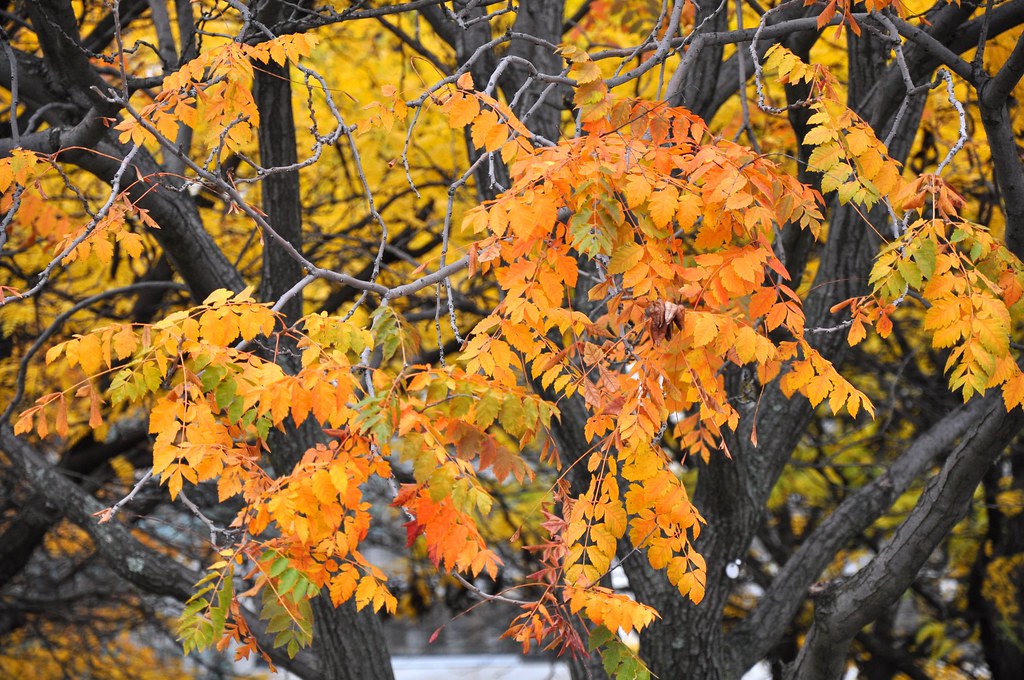
#GOLDEN RAIN TREE FULL#
What type of environment does it grow in?Ĭhinese rain tree is native to Taiwan and thrives in temperate climates. It tolerates full sun, partial shade, drought, frost, heat, well drained to wet soils, extended flooding and air pollution. It grows on a wide range of soil types and may be tolerant of light salt spray, but not of saline conditions. The trunk is light brown and smooth when young, but may develop ridges later. The seeds are small, black and round and about 5 mm in diameter. Fruits are up to 50 mm long and appear in large drooping clusters. The fruit/seed pod is an inflated papery capsule that splits into three parts and is light pink to deep rose in colour. Each flower contains seven to eight pale yellow stamens with hairy white filaments. They are butter-yellow with five petals that vary in length until opening. Each leaflet is approximately 90 mm in length.įlowers are small, to 20 mm in length, and occur in branched clusters at the stem tips. The leaflets are narrow, ovate (pointed at one end and rounded at the other), and have irregularly toothed edges and a long, tapering point. The leaves are hairless, often appear feathery and measure up to 90 mm in length. It has compound leaves (ie made up of several distinct leaflets) that are dark green above and paler green below and of variable size and shape. It has been recorded in Australia as growing to approximately 5 m tall, and up to 18 m under ideal conditions and may achieve a spread of 10-15 m when mature. What does it look like?Ĭhinese rain tree is a small, deciduous tree. It is not known exactly how the seeds are dispersed, but it is possible that water may contribute. Recorded infestations of the plant in Australia may be traced back to escapees from gardens, urban parks and street trees. How does it spread?Ĭhinese rain tree reproduces by seed, which can germinate within 6–8 days. Where is it found?Ĭhinese rain tree has naturalised in Brisbane and near Noosa in Queensland and near Lismore in NSW. Although only in the early stages of establishment, this weed has the potential to seriously degrade Australia’s ecosystems. It was first recognised as a naturalised environmental weed in the 1990s in the Brisbane City Council area where it has invaded urban parks, bushland, gullies and streets.

Specific epithet means in a panicle in reference to the floral inflorescence.This plant is on the National Environmental Alert ListĬhinese rain tree is a problem weed in Japan and the USA, where it has naturalised across five states. Due to its rapid growth habit and high seed viability in warmer climates, Chinese rain tree may crowd out native plant populations. Genus name honors Joseph Gottlieb Koelreuter (1733-1806), professor of natural history at Karlsruhe, a pioneer experimental investigator of plant hybridization. Flowers give way to interesting, brown, papery seed capsules which somewhat resemble Chinese lanterns.

Falling blossoms may or may not resemble "golden rain", but the fallen blossoms often form an attractive golden carpet under the tree. Bright yellow flowers (1/2" wide) appear in early summer in long, terminal, panicles (12-15"). Leaves emerge pinkish bronze to purplish in spring, mature to a bright green in summer and turn yellow (quality variable) in fall. Features pinnate or bipinnate, feathery, compound leaves (to 18" long), each leaf having 7-17 irregularly lobed leaflets. Koelreuteria paniculata, commonly called golden raintree, is a small, open-branching, irregularly-shaped, deciduous tree with a rounded crown which typically grows 30-40' tall and as wide.


 0 kommentar(er)
0 kommentar(er)
